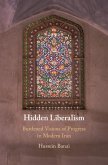This book studies the politics that make the tricolour flag possibly the most revered of the symbols, icons and markers associated with nation and nationalism in twentieth-century India. The emphasis on the flag as a visual symbol aims to question certain dominant assumptions about visuality. Anchored on Mahatma Gandhi's 'believing eye', this study reveals specificities of visual experience in the South Asian milieu. The account begins with a survey of the pre-colonial period, focuses on colonial lives of the flag, and then moves ahead to explain the contemporary dynamics of seeing the flag in India. The Flag Satyagraha of Jubblepore and Nagpur in 1922-23, the adoption of the Congress Flag in 1931, the resolution for the future flag in the Constituent Assembly of India in 1947, the history of the colour saffron, and the codes governing the flag, as well as legal cases, are all explored in depth in this book.
Dieser Download kann aus rechtlichen Gründen nur mit Rechnungsadresse in A, B, BG, CY, CZ, D, DK, EW, E, FIN, F, GR, HR, H, IRL, I, LT, L, LR, M, NL, PL, P, R, S, SLO, SK ausgeliefert werden.









